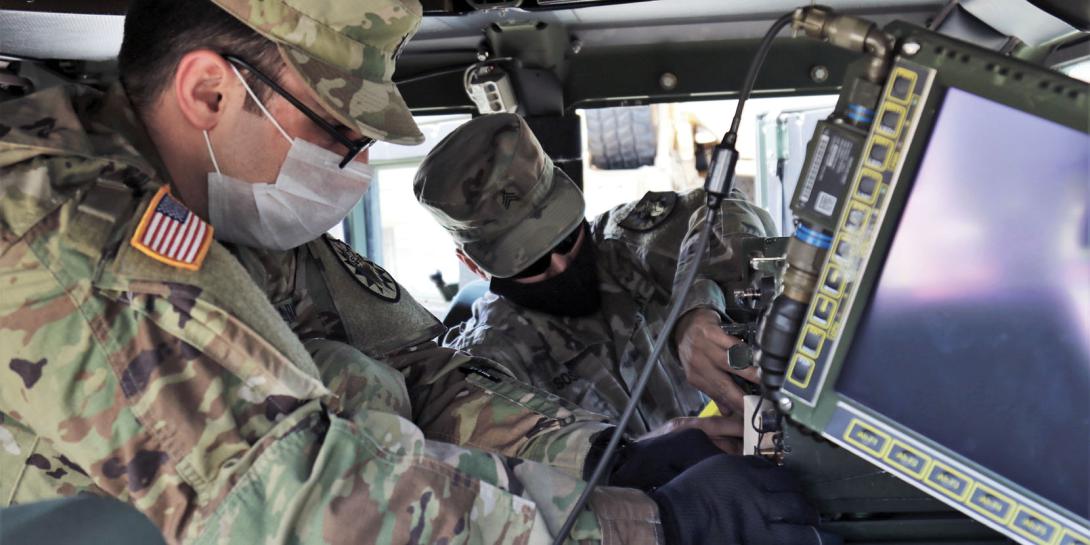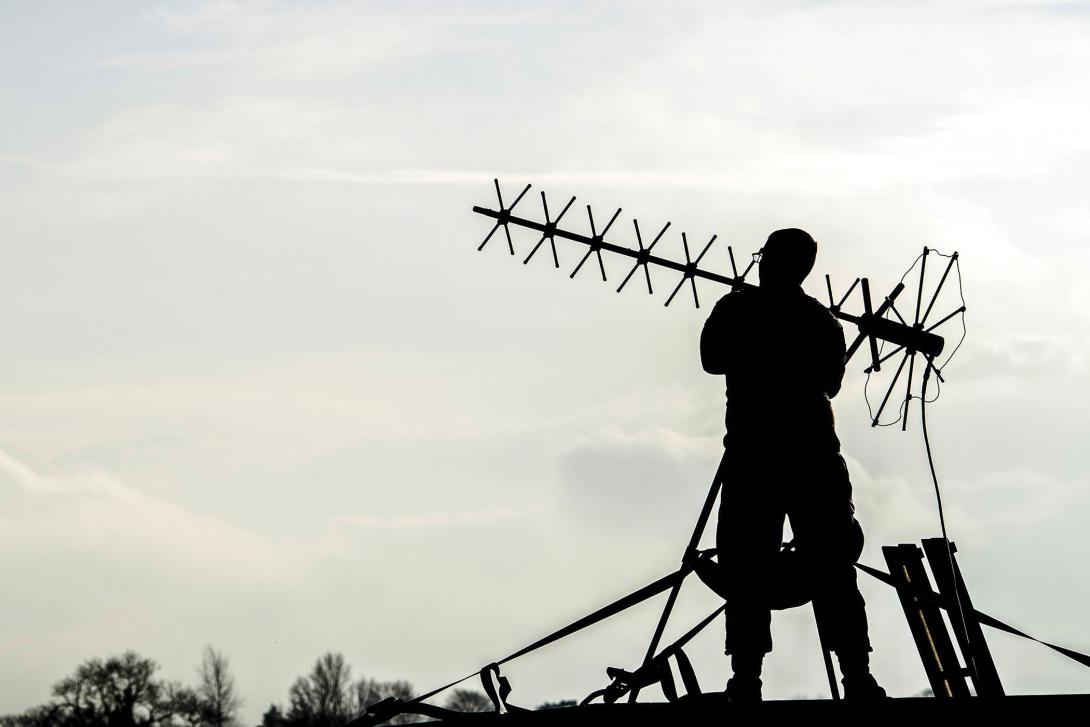Army Encryption Chip Finishing Initial NSA Testing
The U.S. Army’s universal, reprogrammable encryption chip is in final testing and may be destined for the service’s next-generation encryption fill device, other military services or possibly even the commercial sector.
The REprogrammable Single Chip Universal Encryptor (RESCUE) technology was developed to be a government-owned, general-purpose cryptographic module and architecture that is highly tailorable to counter emerging cryptographic threats. It uses standardized encryption algorithms designed by the National Security Agency (NSA) and the National Institute for Standards and Technology.
By moving to a standard, universal chip, the Army—and possibly other military services and organizations—should decrease the number and variety of cryptographic engine cores while increasing capabilities and reducing costs and timelines. The Army and others could integrate RESCUE into a wide array of communications devices such as radios, satellites and computers, as well as unmanned air and ground systems or even munitions that use or transmit encrypted information. The chip can modernize existing systems or be added to new systems in development.
“We are completing the initial round of testing and approval for the baseline government product with NSA now. Then it can be ported out or shared with the joint community, whether that’s other services and their program partners or commercial partners that want it inserted into their radios—radios being a loose term,” says Brian Lyttle, chief, Cyber Security and Information Assurance Division, within the Army’s C5ISR (Command, Control, Communications, Computers, Cyber, Intelligence, Surveillance and Reconnaissance) Center. “It’s really any device that communicates back onto the network, whether that is a manpack radio, an unmanned aerial vehicle or robot, or even some of the weapon systems that have a transmitter.”
As the chip goes through testing, the service is tweaking the design to address any issues that arise, Lyttle adds. “Baseline RESCUE design and implementation include multiple algorithms and key management infrastructure capabilities. The Army has been focused on closing out all remaining defects identified during the integration and internal system testing.”
When RESCUE is embedded into a system, a radio or unmanned vehicle, for example, that system also will have to go through NSA testing and certification, but because RESCUE has been there and done that, a process that can take years might be whittled down to a matter of months. “Normally, a two- to four-year process, we anticipate the incorporation of RESCUE will shorten a company’s certification timeline to months when they reuse our government-designed and accredited chipset. Companies who reuse our chipset will be required to submit lessons learned to us in order to improve the baseline RESCUE design, and we’ll upgrade RESCUE versions as appropriate,” Lyttle elaborates. “RESCUE’s unique capability is the ability to update in the field contrasted by other encryption devices, which require depot maintenance procedures to upgrade.”
While no agreements have yet been completed, the other services and the U.S. Special Operations Command have shown interest, Lyttle reports. The C5ISR team is forging agreements with two Air Force program offices and have held discussions with Special Operations Command and the Navy.
Additionally, RESCUE could be included in the Army’s Next-Generation Load Device-Medium, or NGLD-M. A load device is used to update encryption codes for radios or other systems. Those updates can be done physically or over the network. NGLD-M will be one of a family of devices, and it will be compatible with existing systems within the Army, Air Force, Navy, Marine Corps, NSA and other government agencies such as the FBI. It also will meet the NATO standard.
The NGLD family of devices will replace the Simple Key Loader, a ruggedized, portable, hand-held system built by Sierra Nevada Corporation with software from Science Applications International Corporation (SAIC). It is designed to securely receive, store and transfer encryption. Sierra Nevada was awarded a $318.9 million contract in August to continue production of the Simple Key Loader. In a press release announcing the contract, the company also indicated its intent to compete for the NGLD-M contract.
The draft request for proposals for NGLD-M released in July by the Army’s Program Executive Office-Command, Control, Communications-Tactical specifies that RESCUE is not required but is available for vendors to incorporate into their NGLD-M solutions. “The REprogrammable Single Chip Universal Encryptor (RESCUE) Technical Data Package (TDP) is available to industry offerors as an option to meet the crypto subcomponent requirements for the NGLD-M platform,” the document states.
Commercial companies also are showing interest. Lyttle’s team already is working with two companies, he says, that would prefer not to be named publicly. “We’re actually forming official transition agreements with them to transition the technology over to them so that they can use it.”
Others are interested in commercial research and development agreements, or CRADAs. “We’re also forming commercial partnerships with companies to conduct cooperative research and development to where we have the design and the intellectual property. We work together with them to implement it in a way that’s beneficial to them, and the end product that they’re building so they can then sell it back to the military,” he reports. “In that way, we’ve brought down their risk to develop the product, and it’s built to a standard we know will interoperate within the Army and the joint forces, since all the communications standards are really joint.”
Furthermore, Lyttle envisions the possibility of the commercial sector adopting a version of RESCUE, making it a dual-use technology. Possibilities include critical infrastructure sectors such as the banking and finance sector, energy and power and medical markets. “It’s something I would very much like to explore. That’s where I’d like to go where it’s available for licensing or cooperative research and development for other companies.”
To make that happen, though, the chip likely would need some changes. The initial design is on a field-programmable gate array chip, which allows developers to tailor the information on the chip to fill specific encryption needs. It also can be reconfigured and reprogrammed more easily if needed, but that too comes with limitations.
“It’s meant to house the new algorithms, but that chipset has a pretty high energy consumption, and it burns hot, which is OK within some applications,” Lyttle explains. “For some of the more embedded applications where the encryption chip is buried inside a metallic case, it would generate too much heat and consume too much power.”
Moving away from the gate array design is the idea behind one of the CRADAs being offered from industry. “We have a request in from a company to consider a CRADA to port that over to the ASIC chipsets,” Lyttle states, referring to the application-specific integrated circuit chip.
While that option offers benefits, there is a trade-off. “That would mean you can’t reprogram the algorithms, but you can reuse the design at least to house the updated algorithms that NSA and the National Institute of Standards and Technology are working on right now,” Lyttle says.
The Defense Department chose the C5ISR Center—then known as the Communications-Electronics Research, Development and Engineering Center—to lead the RESCUE effort in part because the Army has the largest number of devices that need cryptographic service. Also, the organization already had the necessary cryptographic research and development expertise.
“Commercial technology evolved to where you can reprogram chipsets, and so, the encryption algorithm life cycle is moving faster now. Knowing this equipment is going to be in the field a long time, yet you’re going to have to update the algorithms, we decided we needed a science and technology project—with some capital funds from Congress—to build one of these,” Lyttle recalls. “There were so few suppliers within commercial industry, and it took them so long to get it certified that we thought it would be beneficial to the commercial providers if we could provide them the blueprints essentially to something that was NSA approved and would work across the joint community.”
Other military and government organizations have similar objectives to create a common cryptographic core chip, but none process the broad capabilities in this particular form as RESCUE, according to Army documentation.
Read more about cybersecurity in the January issue of SIGNAL, online on January 4.







Comment
Nothing is secured in the
Nothing is secured in the long run. Do not get to trusting in any one system.
This maybe good for one year or fifty years.
What will the new device
What will the new device housing look like? Hopefully it's not the old PDA Palm Pilot that we've had to deal with for the past 10 years. Here's to a Tablet or IPAD with a fill-port attached!
Comments